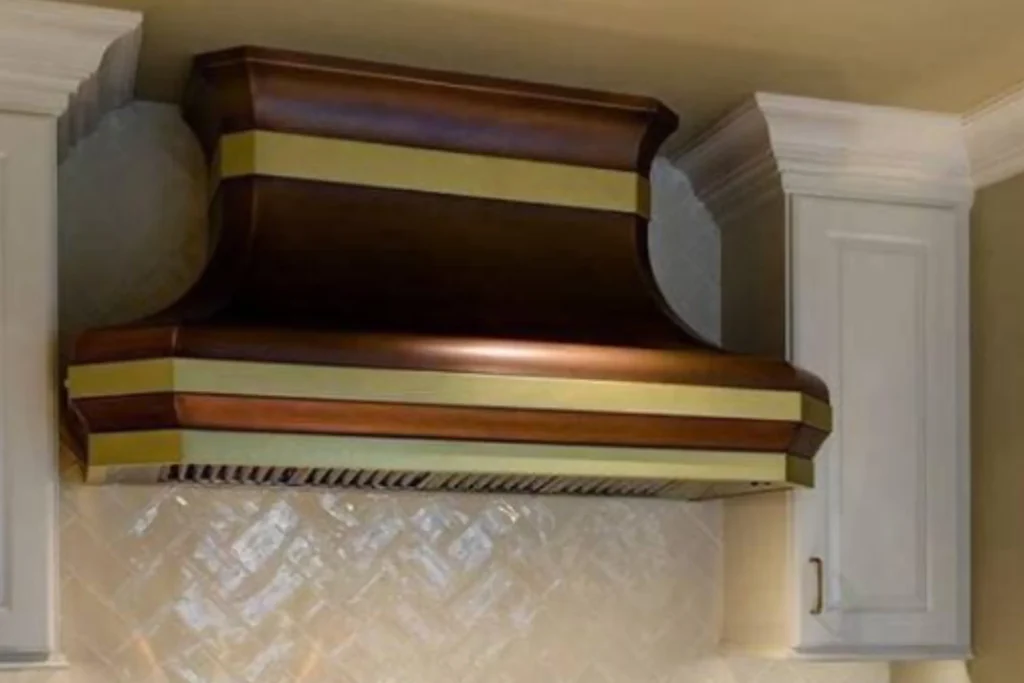My old range hood was garbage. Loud, ugly, and completely useless at actually removing smoke. When I burned dinner, the whole house knew about it for hours.
So when we gutted our kitchen last year, I figured I’d just grab whatever looked decent at Home Depot. Then my contractor mentioned this local guy who builds custom hoods. “Just talk to him,” he said. “See what he says.”
Best decision we made during the whole renovation.
What Nobody Tells You
About Standard Hoods
Standard range hoods suck. Not just mine—most of them.

Your Perfect Kitchen Range Hood
They’re too small, too weak, or positioned wrong. The cheap ones sound like jet engines. The expensive ones still look like they belong in a cafeteria.
The custom guy—his name’s Mike—came over and immediately started measuring everything. Not just the stove, but how high our ceilings were, where the ductwork could go, even how we cook. Turns out we needed way more power than I thought because we cook with high heat a lot.
He also pointed out that our old hood was mounted too high. No wonder it never caught anything. “You want it low enough to work but high enough that you don’t bang your head,” he said. Seems obvious now.
Materials That Don’t Suck
Mike showed us photos of hoods he’d built. Some were stainless steel but way nicer than store-bought ones. Others were copper that looked incredible—all green and weathered. A few were wood that matched the cabinets perfectly.
We went with steel because it matches our appliances, but Mike made it custom-sized for our space. No weird gaps or awkward proportions. He also rounded the corners and hid all the screws so it looks clean, not industrial.
The wood ones were tempting though. One photo showed this hood that looked like part of the cabinetry until you realized it was ventilation. Pretty clever.
Getting It Built
The Process Was Simple
Mike measured everything twice, drew up plans, and gave us a quote. Took about six weeks to build and another week to install. He coordinated with our electrician for the wiring and made sure the ductwork was right.
Installation day was interesting. This thing weighs probably three times what our old hood did. Mike and his helper knew what they were doing though. They’d reinforced the mounting points during framing.
The wiring was more complex than expected. We added separate switches for the lights and fan, plus a dimmer. Worth it—the LED lights under the hood are perfect for cooking.
How It Changed Everything
Six months later, I love this thing. It’s quiet—like, really quiet. I can run it on high and still have a normal conversation. The old one sounded like a garbage disposal.
It actually works too. I can sear steaks without setting off the smoke detector. Made fish last week and the smell was gone in minutes instead of lingering for days.
The lights are great. Bright when I need them for chopping, dimmed down for atmosphere when we’re eating at the island. Small thing, but it makes the kitchen feel more finished.
What It Cost
Expensive? Yeah. About $3,500 total including installation. A decent store-bought hood would’ve been maybe $800-1,200. But here’s the thing—this one actually works. And it looks like it belongs in our kitchen instead of being some random appliance we stuck on the wall.
Mike guarantees his work too. If something breaks, he fixes it. Try getting that kind of service from a big box store.
Worth It or Not?
Depends on your situation. If you barely cook, probably not worth the extra money. But if you use your kitchen a lot and care how it looks, it’s worth considering.
Start by talking to local fabricators. Most will come look at your space for free and give you ideas. Even if you decide against custom, you’ll know what features actually matter.
Our kitchen feels complete now in a way it never did before. Everything works together instead of looking like we just bought whatever was on sale. Sometimes spending more upfront saves you headaches later.
Just don’t wait until the last minute like we almost did. Custom work takes time, and you don’t want to hold up your whole project waiting for one piece.
